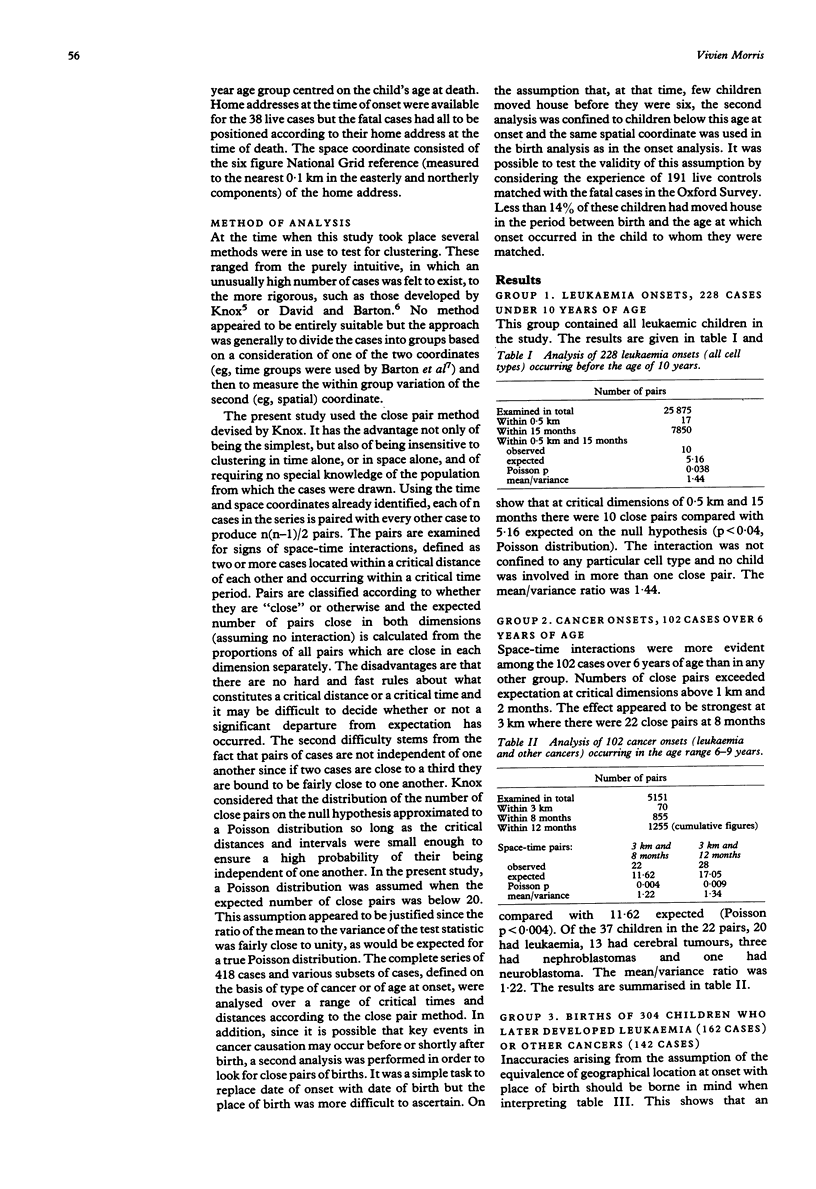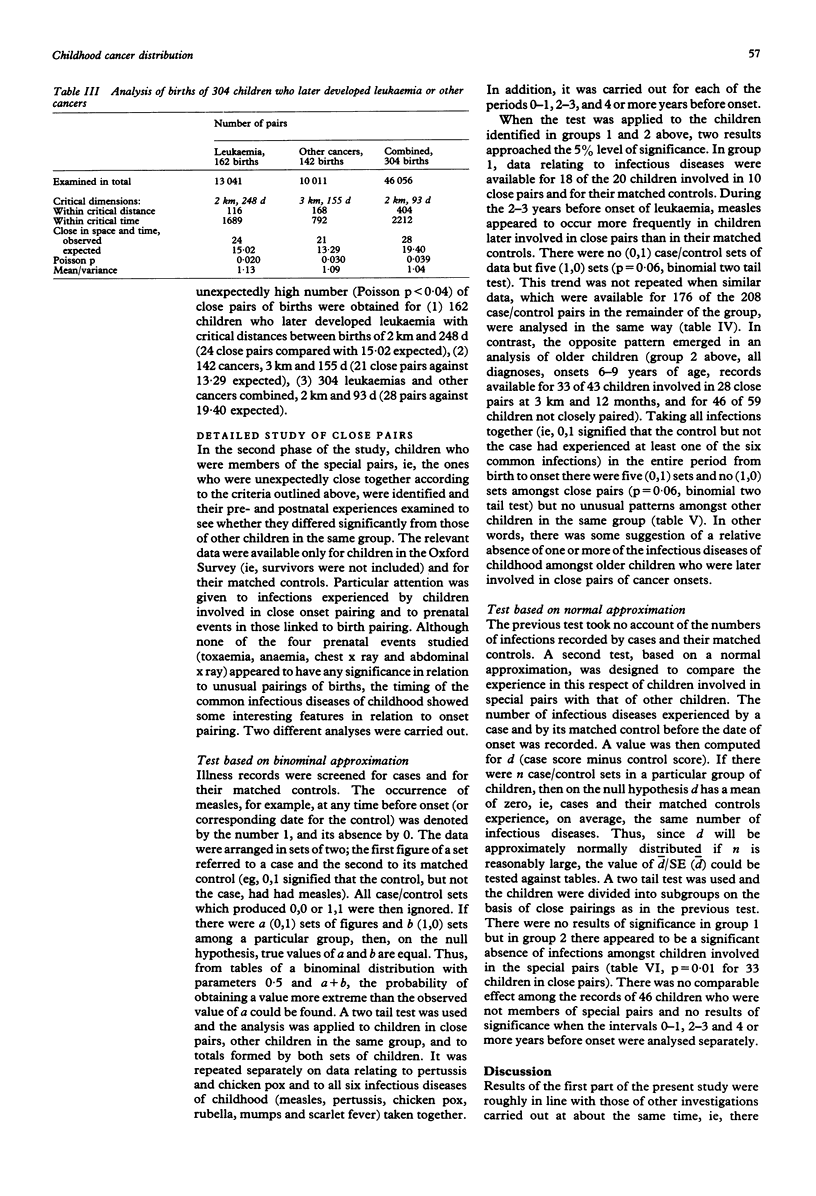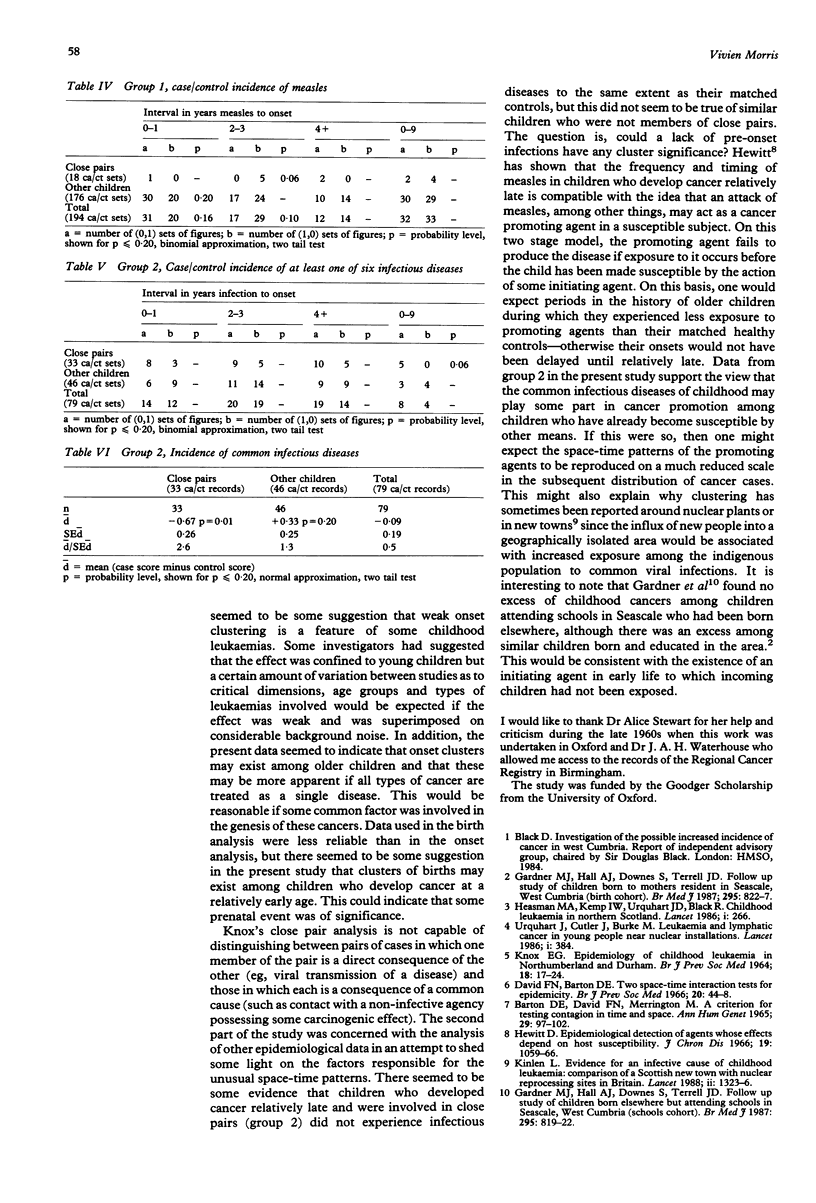Abstract
STUDY OBJECTIVE--The aim of the study was to examine a cohort of cases of childhood cancer occurring in a defined geographical area to try to identify clustering and possible causative factors. DESIGN--Data were analysed using the close pair method developed by Knox for signs of clustering in relation to date and place of onset or date and place of birth. SETTING--Cases were those occurring in the 8 year period between 1953 and 1960 in four old counties of the Midlands of England (Worcestershire, Warwickshire, Staffordshire, Shropshire). CASES--418 children under 10 years developed cancers during the study period: leukaemia 228, cerebral tumour 99, neuroblastoma 45, nephroblastoma 46. It is thought that data collection was complete. Cases were matched for region, sex and date of birth with live controls. RESULTS--There was evidence among some age groups and diagnoses of an unexpectedly high number of close pairs of onsets, and some indication of similar patterns among births of children who later developed cancer. The pre- and postnatal experiences of children involved in close pairs were examined to see whether they differed from those of control children. Measles appeared to occur more often in the 2-3 years before the onset of leukaemia in children who were later involved in close pairs than in their matched controls. CONCLUSIONS--Common infectious diseases of childhood may play a minor role in the development of some cancers. Epidemics of these diseases may then be reflected on a greatly reduced scale in the subsequent distribution of cancer cases.
Full text
PDF



Selected References
These references are in PubMed. This may not be the complete list of references from this article.
- Gardner M. J., Hall A. J., Downes S., Terrell J. D. Follow up study of children born elsewhere but attending schools in Seascale, West Cumbria (schools cohort). Br Med J (Clin Res Ed) 1987 Oct 3;295(6602):819–822. doi: 10.1136/bmj.295.6602.819. [DOI] [PMC free article] [PubMed] [Google Scholar]
- Gardner M. J., Hall A. J., Downes S., Terrell J. D. Follow up study of children born to mothers resident in Seascale, West Cumbria (birth cohort). Br Med J (Clin Res Ed) 1987 Oct 3;295(6602):822–827. doi: 10.1136/bmj.295.6602.822. [DOI] [PMC free article] [PubMed] [Google Scholar]
- Heasman M. A., Kemp I. W., Urquhart J. D., Black R. Childhood leukaemia in northern Scotland. Lancet. 1986 Feb 1;1(8475):266–266. doi: 10.1016/s0140-6736(86)90794-4. [DOI] [PubMed] [Google Scholar]
- Hewitt D. Epidemiologic detention of agents whose effects depend on host susceptibility. J Chronic Dis. 1966 Oct;19(10):1059–1066. doi: 10.1016/0021-9681(66)90139-1. [DOI] [PubMed] [Google Scholar]
- KNOX G. EPIDEMIOLOGY OF CHILDHOOD LEUKAEMIA IN NORTHUMBERLAND AND DURHAM. Br J Prev Soc Med. 1964 Jan;18:17–24. doi: 10.1136/jech.18.1.17. [DOI] [PMC free article] [PubMed] [Google Scholar]
- Kinlen L. Evidence for an infective cause of childhood leukaemia: comparison of a Scottish new town with nuclear reprocessing sites in Britain. Lancet. 1988 Dec 10;2(8624):1323–1327. doi: 10.1016/s0140-6736(88)90867-7. [DOI] [PubMed] [Google Scholar]


